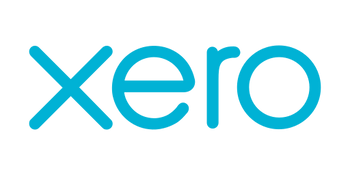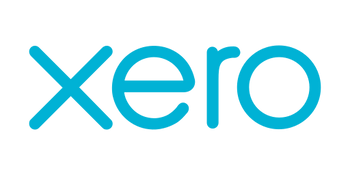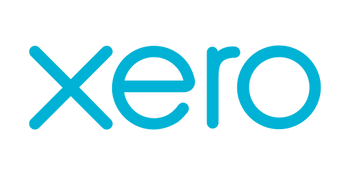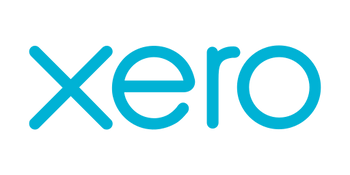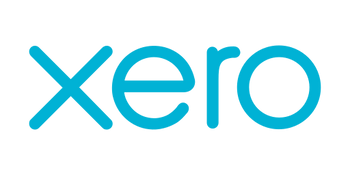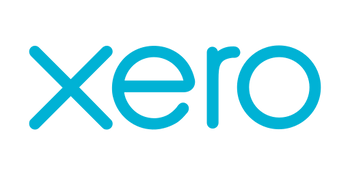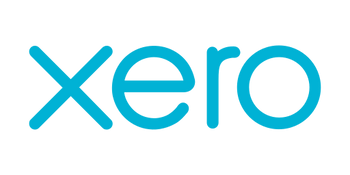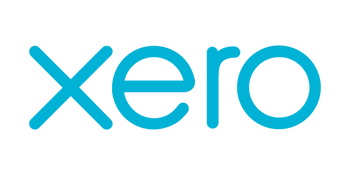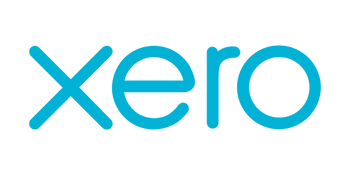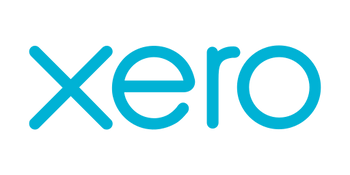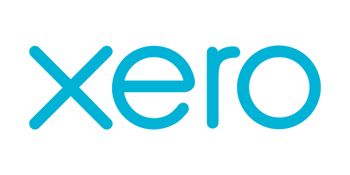{"id":9649881055506,"title":"Xero Watch Employee Leaves Integration","handle":"xero-watch-employee-leaves-integration","description":"\u003cbody\u003e\n\n\n \u003cmeta charset=\"utf-8\"\u003e\n \u003ctitle\u003eXero Employee Leaves | Consultants In-A-Box\u003c\/title\u003e\n \u003cmeta name=\"viewport\" content=\"width=device-width, initial-scale=1\"\u003e\n \u003cstyle\u003e\n body {\n font-family: Inter, \"Segoe UI\", Roboto, sans-serif;\n background: #ffffff;\n color: #1f2937;\n line-height: 1.7;\n margin: 0;\n padding: 48px;\n }\n h1 { font-size: 32px; margin-bottom: 16px; }\n h2 { font-size: 22px; margin-top: 32px; }\n p { margin: 12px 0; }\n ul { margin: 12px 0 12px 24px; }\n strong { font-weight: 600; }\n \u003c\/style\u003e\n\n\n \u003ch1\u003eReal-Time Leave Tracking with Xero: Reduce Admin, Improve Staffing\u003c\/h1\u003e\n\n \u003cp\u003eThe Xero employee leave capability turns time-off records into a live, usable source of truth about who’s available to work. Instead of siloed spreadsheets and delayed updates, leave events become immediate signals that ripple through scheduling, payroll, and project tools so teams can act quickly and confidently.\u003c\/p\u003e\n \u003cp\u003eThis matters because availability is the backbone of daily operations. When organizations know who’s on leave in real time, they prevent missed shifts, avoid payroll mistakes, and keep projects on schedule. Integrating Xero leave data into operational workflows cuts repetitive admin, reduces human error, and gives leaders a clearer picture for planning and compliance—part of a broader digital transformation that drives measurable business efficiency.\u003c\/p\u003e\n\n \u003ch2\u003eHow It Works\u003c\/h2\u003e\n \u003cp\u003eAt a simple level, Xero’s leave feature records requests, approvals, and balances. The next step is to connect that data to the tools teams already use so leave no longer lives as a static record in HR alone. Integrations subscribe to leave updates and translate them into actions: mark calendars, update rosters, adjust payroll inputs, and notify stakeholders.\u003c\/p\u003e\n \u003cp\u003eThink of it as a flow: an employee submits a leave request → the request is approved in Xero → that event triggers downstream updates across your systems. Some actions are straightforward (block a calendar, decrement leave balance). Others are more operational: reassign tasks on a project board, recalculate expected labor costs for the week, or surface coverage gaps to a shift manager. The key is automation—leave becomes a trigger that drives predictable, auditable workflows rather than a manual reconciliation problem.\u003c\/p\u003e\n\n \u003ch2\u003eThe Power of AI \u0026amp; Agentic Automation\u003c\/h2\u003e\n \u003cp\u003eAdding AI and agentic automation transforms leave handling from a series of one-off automations into intelligent, context-aware orchestration. AI agents interpret leave events, prioritize the right follow-up actions, and coordinate across systems with minimal human oversight. They can also learn from patterns to reduce friction over time.\u003c\/p\u003e\n \u003cul\u003e\n \u003cli\u003e\n\u003cstrong\u003eAI agents that route requests:\u003c\/strong\u003e A smart assistant evaluates a leave request against role requirements, team calendars, and policy rules, then routes approvals to the right manager or flags exceptions to HR.\u003c\/li\u003e\n \u003cli\u003e\n\u003cstrong\u003eWorkflow bots managing repetitive tasks:\u003c\/strong\u003e Once leave is approved, bots update schedules, swap shifts, and synchronize leave balances with payroll and timekeeping systems automatically.\u003c\/li\u003e\n \u003cli\u003e\n\u003cstrong\u003eAI assistants generating insights:\u003c\/strong\u003e Agents summarize leave trends—accrual burn rates, peak absence days, or teams with chronic shortage—so managers have actionable analytics without manual reporting.\u003c\/li\u003e\n \u003cli\u003e\n\u003cstrong\u003eProactive risk detection:\u003c\/strong\u003e Machine learning can surface risky patterns, such as frequent short-notice absences in a high-impact role, prompting a human check-in before service levels slip.\u003c\/li\u003e\n \u003cli\u003e\n\u003cstrong\u003eContext-aware notifications:\u003c\/strong\u003e When coverage gaps appear, agents send tailored alerts—shift leads get staffing suggestions, finance receives payroll adjustments, and HR sees policy exceptions for review.\u003c\/li\u003e\n \u003c\/ul\u003e\n\n \u003ch2\u003eReal-World Use Cases\u003c\/h2\u003e\n \u003cul\u003e\n \u003cli\u003e\n\u003cstrong\u003eShift coverage for frontline teams:\u003c\/strong\u003e In retail and hospitality, a leave event can trigger a shift-swap workflow that suggests replacements based on availability and qualifications, notifies candidates, and confirms coverage—reducing manual calls and last-minute surprises.\u003c\/li\u003e\n \u003cli\u003e\n\u003cstrong\u003ePayroll accuracy and cost control:\u003c\/strong\u003e When leave approvals automatically feed payroll systems, overtime, statutory payments, and accruals are calculated correctly and on time, lowering the chance of overpayments or costly corrections.\u003c\/li\u003e\n \u003cli\u003e\n\u003cstrong\u003eProject planning and delivery:\u003c\/strong\u003e Project managers receive instant updates when critical contributors take leave. AI agents recommend timeline adjustments, reassign smaller tasks, or suggest hiring contractors to keep milestones on track.\u003c\/li\u003e\n \u003cli\u003e\n\u003cstrong\u003eCompliance and audit trails:\u003c\/strong\u003e Automated logs capture request timestamps, approver identities, and policy exceptions. This creates a tamper-evident record that simplifies audits and demonstrates compliance with labor laws.\u003c\/li\u003e\n \u003cli\u003e\n\u003cstrong\u003eEmployee experience and self-service:\u003c\/strong\u003e Employees get immediate confirmation of leave status and clear visibility into how time off affects schedules and pay. Chat-based assistants answer common questions about balances, making HR interactions faster and less manual.\u003c\/li\u003e\n \u003cli\u003e\n\u003cstrong\u003eCapacity forecasting for seasonal demand:\u003c\/strong\u003e During peak seasons, combining confirmed and pending leave into demand forecasts helps operations staff appropriately or plan temporary hiring to avoid shortfalls.\u003c\/li\u003e\n \u003c\/ul\u003e\n\n \u003ch2\u003eBusiness Benefits\u003c\/h2\u003e\n \u003cp\u003eWhen leave data becomes part of your operational fabric—enhanced by AI integration and workflow automation—organizations gain practical improvements across time, cost, and risk dimensions.\u003c\/p\u003e\n \u003cul\u003e\n \u003cli\u003e\n\u003cstrong\u003eTime savings:\u003c\/strong\u003e Automations remove repetitive tasks—approvals, roster updates, and payroll inputs—freeing HR and operations teams to focus on higher-value work. Teams often reclaim hours per week previously spent reconciling calendars and spreadsheets.\u003c\/li\u003e\n \u003cli\u003e\n\u003cstrong\u003eFewer errors:\u003c\/strong\u003e Real-time synchronization reduces manual entry mistakes that lead to missed shifts, incorrect accruals, or payroll mismatches. Cleaner data lowers the need for downstream corrections and dispute handling.\u003c\/li\u003e\n \u003cli\u003e\n\u003cstrong\u003eFaster decision-making:\u003c\/strong\u003e With current availability in front of them, managers can reassign work and adjust plans immediately rather than waiting for end-of-day reports or manual confirmations.\u003c\/li\u003e\n \u003cli\u003e\n\u003cstrong\u003eScalability:\u003c\/strong\u003e Automated workflows scale with headcount and seasonal spikes without a proportional increase in administrative staff, enabling growth without extra operational burden.\u003c\/li\u003e\n \u003cli\u003e\n\u003cstrong\u003eImproved collaboration:\u003c\/strong\u003e Broadcasting leave events to calendars, project tools, and team chat reduces cross-functional friction and accelerates coordination.\u003c\/li\u003e\n \u003cli\u003e\n\u003cstrong\u003eStronger compliance posture:\u003c\/strong\u003e Automated logging and auditable processes make it easier to demonstrate compliance with labor rules and internal policies, reducing legal and financial exposure.\u003c\/li\u003e\n \u003cli\u003e\n\u003cstrong\u003eBetter employee experience:\u003c\/strong\u003e Quick, transparent handling of leave requests builds trust and reduces HR tickets, which in turn supports retention and morale.\u003c\/li\u003e\n \u003cli\u003e\n\u003cstrong\u003eActionable insights:\u003c\/strong\u003e Aggregated leave analytics inform workforce planning, hiring, and training investments to fix chronic coverage gaps or capacity shortfalls.\u003c\/li\u003e\n \u003c\/ul\u003e\n\n \u003ch2\u003eHow Consultants In-A-Box Helps\u003c\/h2\u003e\n \u003cp\u003eConsultants In-A-Box takes a business-first approach to turning Xero leave data into dependable operational capability. We begin with rapid discovery to map how leave information should flow—across payroll, rostering, project management, and communications—so technology supports actual work, not just reports.\u003c\/p\u003e\n \u003cp\u003eFrom that foundation we design workflow automation and AI integrations that prioritize outcomes: payroll accuracy, roster reliability, compliance, and employee experience. Our work typically includes configuring intelligent agents to handle routing and decisioning, creating automations for common operational tasks, and establishing governance and audit trails so processes remain transparent and secure.\u003c\/p\u003e\n \u003cp\u003eEqually important is adoption: we work with leaders and frontline teams to embed new flows into daily routines, train staff on what to expect, and build monitoring so automations improve over time. The goal is durable business efficiency—less firefighting, fewer manual reconciliations, and clearer visibility into workforce availability.\u003c\/p\u003e\n\n \u003ch2\u003eSummary\u003c\/h2\u003e\n \u003cp\u003eConverting Xero leave events into automated, AI-enhanced workflows reduces administrative load, improves staffing accuracy, and creates a single, trusted view of workforce availability. With AI integration and agentic automation, leave data stops being a back-office burden and becomes a strategic input for scheduling, payroll, and project planning. The outcome is practical digital transformation: fewer manual processes, better compliance, faster decisions, and measurable gains in business efficiency.\u003c\/p\u003e\n\n\u003c\/body\u003e","published_at":"2024-06-28T12:40:19-05:00","created_at":"2024-06-28T12:40:20-05:00","vendor":"Xero","type":"Integration","tags":[],"price":0,"price_min":0,"price_max":0,"available":true,"price_varies":false,"compare_at_price":null,"compare_at_price_min":0,"compare_at_price_max":0,"compare_at_price_varies":false,"variants":[{"id":49766815858962,"title":"Default Title","option1":"Default Title","option2":null,"option3":null,"sku":"","requires_shipping":true,"taxable":true,"featured_image":null,"available":true,"name":"Xero Watch Employee Leaves Integration","public_title":null,"options":["Default Title"],"price":0,"weight":0,"compare_at_price":null,"inventory_management":null,"barcode":null,"requires_selling_plan":false,"selling_plan_allocations":[]}],"images":["\/\/consultantsinabox.com\/cdn\/shop\/files\/09e67c660f3cae28da45d68db5749d32_03f19d78-53a8-48fe-b5e5-b768cecf3cc0.png?v=1719596420"],"featured_image":"\/\/consultantsinabox.com\/cdn\/shop\/files\/09e67c660f3cae28da45d68db5749d32_03f19d78-53a8-48fe-b5e5-b768cecf3cc0.png?v=1719596420","options":["Title"],"media":[{"alt":"Xero Logo","id":40003688497426,"position":1,"preview_image":{"aspect_ratio":2.0,"height":256,"width":512,"src":"\/\/consultantsinabox.com\/cdn\/shop\/files\/09e67c660f3cae28da45d68db5749d32_03f19d78-53a8-48fe-b5e5-b768cecf3cc0.png?v=1719596420"},"aspect_ratio":2.0,"height":256,"media_type":"image","src":"\/\/consultantsinabox.com\/cdn\/shop\/files\/09e67c660f3cae28da45d68db5749d32_03f19d78-53a8-48fe-b5e5-b768cecf3cc0.png?v=1719596420","width":512}],"requires_selling_plan":false,"selling_plan_groups":[],"content":"\u003cbody\u003e\n\n\n \u003cmeta charset=\"utf-8\"\u003e\n \u003ctitle\u003eXero Employee Leaves | Consultants In-A-Box\u003c\/title\u003e\n \u003cmeta name=\"viewport\" content=\"width=device-width, initial-scale=1\"\u003e\n \u003cstyle\u003e\n body {\n font-family: Inter, \"Segoe UI\", Roboto, sans-serif;\n background: #ffffff;\n color: #1f2937;\n line-height: 1.7;\n margin: 0;\n padding: 48px;\n }\n h1 { font-size: 32px; margin-bottom: 16px; }\n h2 { font-size: 22px; margin-top: 32px; }\n p { margin: 12px 0; }\n ul { margin: 12px 0 12px 24px; }\n strong { font-weight: 600; }\n \u003c\/style\u003e\n\n\n \u003ch1\u003eReal-Time Leave Tracking with Xero: Reduce Admin, Improve Staffing\u003c\/h1\u003e\n\n \u003cp\u003eThe Xero employee leave capability turns time-off records into a live, usable source of truth about who’s available to work. Instead of siloed spreadsheets and delayed updates, leave events become immediate signals that ripple through scheduling, payroll, and project tools so teams can act quickly and confidently.\u003c\/p\u003e\n \u003cp\u003eThis matters because availability is the backbone of daily operations. When organizations know who’s on leave in real time, they prevent missed shifts, avoid payroll mistakes, and keep projects on schedule. Integrating Xero leave data into operational workflows cuts repetitive admin, reduces human error, and gives leaders a clearer picture for planning and compliance—part of a broader digital transformation that drives measurable business efficiency.\u003c\/p\u003e\n\n \u003ch2\u003eHow It Works\u003c\/h2\u003e\n \u003cp\u003eAt a simple level, Xero’s leave feature records requests, approvals, and balances. The next step is to connect that data to the tools teams already use so leave no longer lives as a static record in HR alone. Integrations subscribe to leave updates and translate them into actions: mark calendars, update rosters, adjust payroll inputs, and notify stakeholders.\u003c\/p\u003e\n \u003cp\u003eThink of it as a flow: an employee submits a leave request → the request is approved in Xero → that event triggers downstream updates across your systems. Some actions are straightforward (block a calendar, decrement leave balance). Others are more operational: reassign tasks on a project board, recalculate expected labor costs for the week, or surface coverage gaps to a shift manager. The key is automation—leave becomes a trigger that drives predictable, auditable workflows rather than a manual reconciliation problem.\u003c\/p\u003e\n\n \u003ch2\u003eThe Power of AI \u0026amp; Agentic Automation\u003c\/h2\u003e\n \u003cp\u003eAdding AI and agentic automation transforms leave handling from a series of one-off automations into intelligent, context-aware orchestration. AI agents interpret leave events, prioritize the right follow-up actions, and coordinate across systems with minimal human oversight. They can also learn from patterns to reduce friction over time.\u003c\/p\u003e\n \u003cul\u003e\n \u003cli\u003e\n\u003cstrong\u003eAI agents that route requests:\u003c\/strong\u003e A smart assistant evaluates a leave request against role requirements, team calendars, and policy rules, then routes approvals to the right manager or flags exceptions to HR.\u003c\/li\u003e\n \u003cli\u003e\n\u003cstrong\u003eWorkflow bots managing repetitive tasks:\u003c\/strong\u003e Once leave is approved, bots update schedules, swap shifts, and synchronize leave balances with payroll and timekeeping systems automatically.\u003c\/li\u003e\n \u003cli\u003e\n\u003cstrong\u003eAI assistants generating insights:\u003c\/strong\u003e Agents summarize leave trends—accrual burn rates, peak absence days, or teams with chronic shortage—so managers have actionable analytics without manual reporting.\u003c\/li\u003e\n \u003cli\u003e\n\u003cstrong\u003eProactive risk detection:\u003c\/strong\u003e Machine learning can surface risky patterns, such as frequent short-notice absences in a high-impact role, prompting a human check-in before service levels slip.\u003c\/li\u003e\n \u003cli\u003e\n\u003cstrong\u003eContext-aware notifications:\u003c\/strong\u003e When coverage gaps appear, agents send tailored alerts—shift leads get staffing suggestions, finance receives payroll adjustments, and HR sees policy exceptions for review.\u003c\/li\u003e\n \u003c\/ul\u003e\n\n \u003ch2\u003eReal-World Use Cases\u003c\/h2\u003e\n \u003cul\u003e\n \u003cli\u003e\n\u003cstrong\u003eShift coverage for frontline teams:\u003c\/strong\u003e In retail and hospitality, a leave event can trigger a shift-swap workflow that suggests replacements based on availability and qualifications, notifies candidates, and confirms coverage—reducing manual calls and last-minute surprises.\u003c\/li\u003e\n \u003cli\u003e\n\u003cstrong\u003ePayroll accuracy and cost control:\u003c\/strong\u003e When leave approvals automatically feed payroll systems, overtime, statutory payments, and accruals are calculated correctly and on time, lowering the chance of overpayments or costly corrections.\u003c\/li\u003e\n \u003cli\u003e\n\u003cstrong\u003eProject planning and delivery:\u003c\/strong\u003e Project managers receive instant updates when critical contributors take leave. AI agents recommend timeline adjustments, reassign smaller tasks, or suggest hiring contractors to keep milestones on track.\u003c\/li\u003e\n \u003cli\u003e\n\u003cstrong\u003eCompliance and audit trails:\u003c\/strong\u003e Automated logs capture request timestamps, approver identities, and policy exceptions. This creates a tamper-evident record that simplifies audits and demonstrates compliance with labor laws.\u003c\/li\u003e\n \u003cli\u003e\n\u003cstrong\u003eEmployee experience and self-service:\u003c\/strong\u003e Employees get immediate confirmation of leave status and clear visibility into how time off affects schedules and pay. Chat-based assistants answer common questions about balances, making HR interactions faster and less manual.\u003c\/li\u003e\n \u003cli\u003e\n\u003cstrong\u003eCapacity forecasting for seasonal demand:\u003c\/strong\u003e During peak seasons, combining confirmed and pending leave into demand forecasts helps operations staff appropriately or plan temporary hiring to avoid shortfalls.\u003c\/li\u003e\n \u003c\/ul\u003e\n\n \u003ch2\u003eBusiness Benefits\u003c\/h2\u003e\n \u003cp\u003eWhen leave data becomes part of your operational fabric—enhanced by AI integration and workflow automation—organizations gain practical improvements across time, cost, and risk dimensions.\u003c\/p\u003e\n \u003cul\u003e\n \u003cli\u003e\n\u003cstrong\u003eTime savings:\u003c\/strong\u003e Automations remove repetitive tasks—approvals, roster updates, and payroll inputs—freeing HR and operations teams to focus on higher-value work. Teams often reclaim hours per week previously spent reconciling calendars and spreadsheets.\u003c\/li\u003e\n \u003cli\u003e\n\u003cstrong\u003eFewer errors:\u003c\/strong\u003e Real-time synchronization reduces manual entry mistakes that lead to missed shifts, incorrect accruals, or payroll mismatches. Cleaner data lowers the need for downstream corrections and dispute handling.\u003c\/li\u003e\n \u003cli\u003e\n\u003cstrong\u003eFaster decision-making:\u003c\/strong\u003e With current availability in front of them, managers can reassign work and adjust plans immediately rather than waiting for end-of-day reports or manual confirmations.\u003c\/li\u003e\n \u003cli\u003e\n\u003cstrong\u003eScalability:\u003c\/strong\u003e Automated workflows scale with headcount and seasonal spikes without a proportional increase in administrative staff, enabling growth without extra operational burden.\u003c\/li\u003e\n \u003cli\u003e\n\u003cstrong\u003eImproved collaboration:\u003c\/strong\u003e Broadcasting leave events to calendars, project tools, and team chat reduces cross-functional friction and accelerates coordination.\u003c\/li\u003e\n \u003cli\u003e\n\u003cstrong\u003eStronger compliance posture:\u003c\/strong\u003e Automated logging and auditable processes make it easier to demonstrate compliance with labor rules and internal policies, reducing legal and financial exposure.\u003c\/li\u003e\n \u003cli\u003e\n\u003cstrong\u003eBetter employee experience:\u003c\/strong\u003e Quick, transparent handling of leave requests builds trust and reduces HR tickets, which in turn supports retention and morale.\u003c\/li\u003e\n \u003cli\u003e\n\u003cstrong\u003eActionable insights:\u003c\/strong\u003e Aggregated leave analytics inform workforce planning, hiring, and training investments to fix chronic coverage gaps or capacity shortfalls.\u003c\/li\u003e\n \u003c\/ul\u003e\n\n \u003ch2\u003eHow Consultants In-A-Box Helps\u003c\/h2\u003e\n \u003cp\u003eConsultants In-A-Box takes a business-first approach to turning Xero leave data into dependable operational capability. We begin with rapid discovery to map how leave information should flow—across payroll, rostering, project management, and communications—so technology supports actual work, not just reports.\u003c\/p\u003e\n \u003cp\u003eFrom that foundation we design workflow automation and AI integrations that prioritize outcomes: payroll accuracy, roster reliability, compliance, and employee experience. Our work typically includes configuring intelligent agents to handle routing and decisioning, creating automations for common operational tasks, and establishing governance and audit trails so processes remain transparent and secure.\u003c\/p\u003e\n \u003cp\u003eEqually important is adoption: we work with leaders and frontline teams to embed new flows into daily routines, train staff on what to expect, and build monitoring so automations improve over time. The goal is durable business efficiency—less firefighting, fewer manual reconciliations, and clearer visibility into workforce availability.\u003c\/p\u003e\n\n \u003ch2\u003eSummary\u003c\/h2\u003e\n \u003cp\u003eConverting Xero leave events into automated, AI-enhanced workflows reduces administrative load, improves staffing accuracy, and creates a single, trusted view of workforce availability. With AI integration and agentic automation, leave data stops being a back-office burden and becomes a strategic input for scheduling, payroll, and project planning. The outcome is practical digital transformation: fewer manual processes, better compliance, faster decisions, and measurable gains in business efficiency.\u003c\/p\u003e\n\n\u003c\/body\u003e"}

